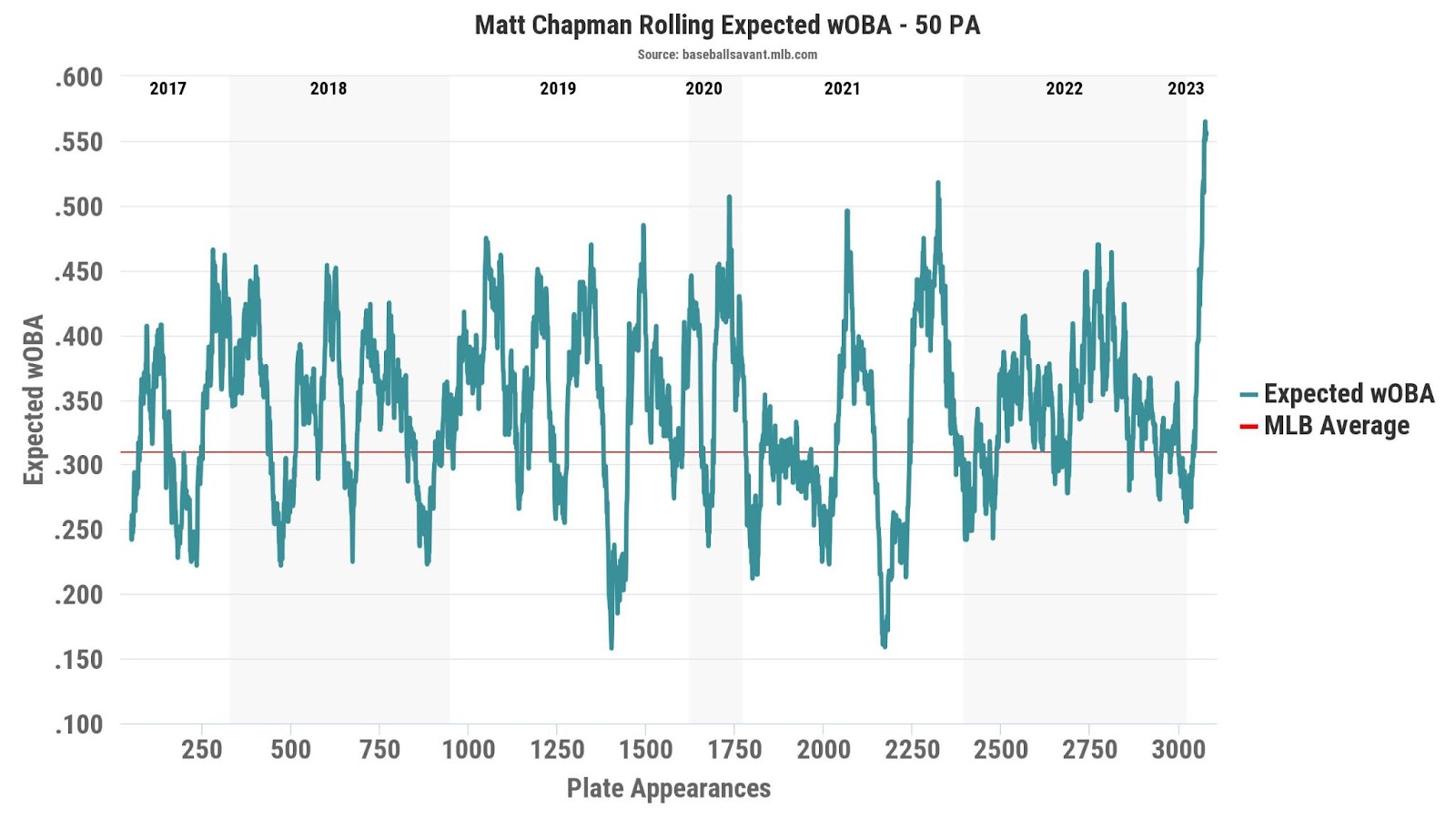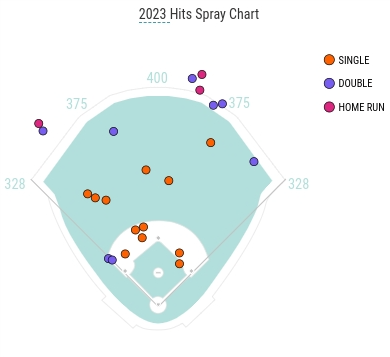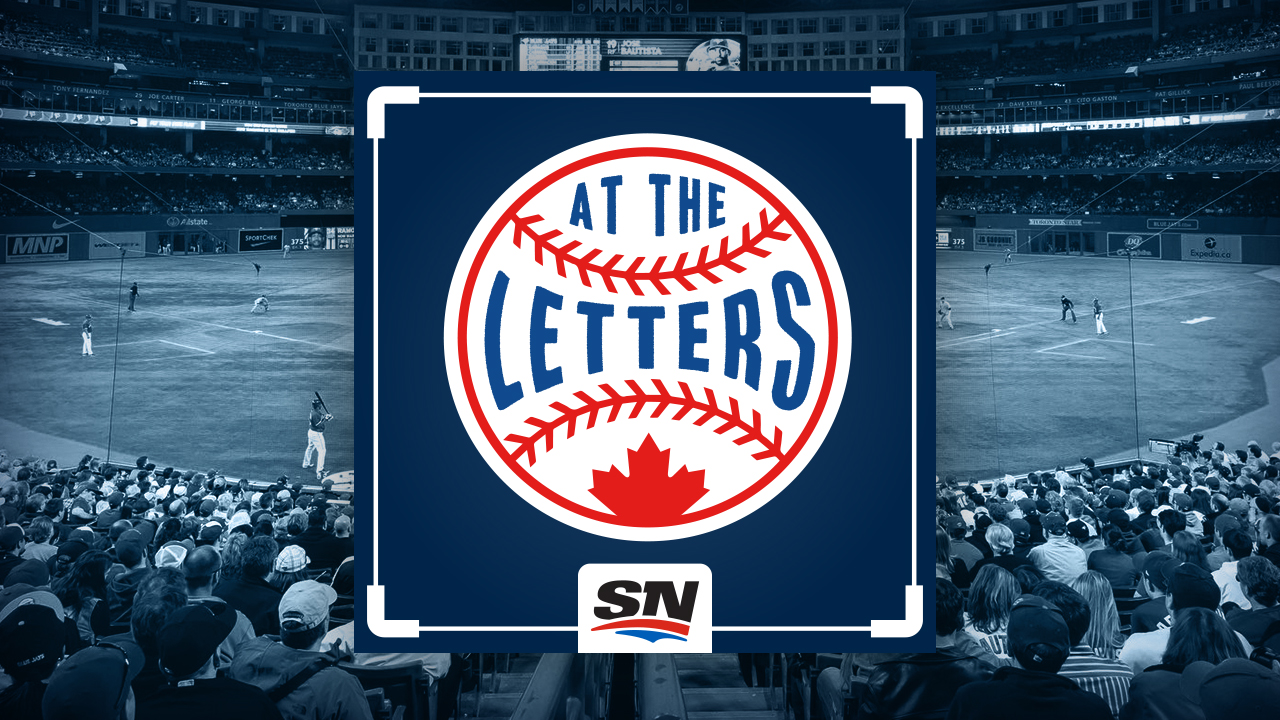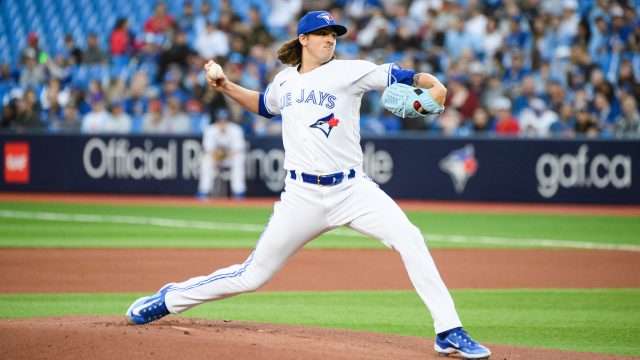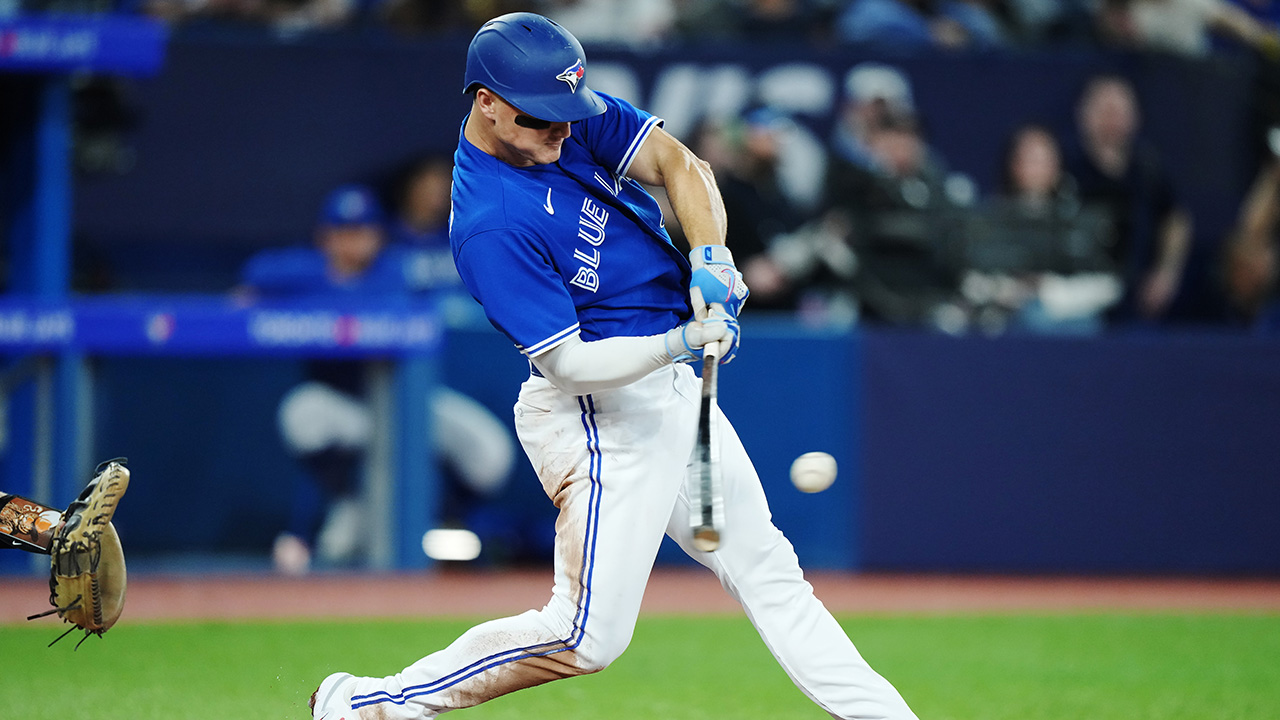
Matt Chapman may have been pencilled into the seventh spot in the Toronto Blue Jays’ season opener, but in the past two weeks he’s been by far the team’s best hitter.
As good as Vladimir Guerrero Jr. and Bo Bichette have looked, Chapman has existed in a tier of his own, slashing .489/.538/.851 and ranking first on the early fWAR leaderboard despite a couple of uncharacteristic misplays in the field.
Continuing at this pace would mean posting the best offensive season of all time. While that seems unlikely, a stretch like this is worth investigating further to see what might be small-sample randomness, and what could be a harbinger of things to come in 2023.
Looking at Chapman’s early-season numbers, the first evidence of statistical wonkiness is a BABIP that sits at a comical .588, almost twice as high as his career average of .296.
Digging a little deeper, those results aren’t as absurd as they seem. While it’s not something Chapman can maintain over a full season, he’s absolutely earning his hits thanks to top-of-class contact quality.
As a result, his expected stats are more or less in line with his actual numbers.
So, we know that Chapman is striking the ball extremely well, well enough that he’s leading the majors in average exit velocity by 0.9 mph. His max exit velocity (112.8 mph) is already better than last season’s (112.7), but it’s still a couple of ticks off his career high — indicating that he’s finding more consistency as opposed to additional raw juice.
That’s harder to project going forward, but it’s clear Chapman is onto something. One possible theory, brought forward by Esteban Rivera at FanGraphs, is that the third baseman’s swing has been improved by a mechanical adjustment wherein he’s traded in a leg kick for a toe tap, allowing him to stay with the ball better and avoid over-rotating to the pull side.
It’s a notion that’s supported by the fact seven of Chapman’s 11 extra-base hits this year have been to centre field or right.
That’s a stark contrast from last year where 63.6 percent of his extra-base hits went to the pull side and he didn’t hit a single home run to right field.
In terms of what to expect from here, it seems likely that the contact Chapman makes will be better than it was last year even if he doesn’t unlock a new power gear. He also seems primed to use the whole field more than he did in 2022.
Another improvement Chapman flashed so far this season is a strikeout rate (19.2%) well below his career average (26.8%). That has dovetailed nicely with all of his hard-hit balls, but it’s more difficult to predict that this trend will hold up with much confidence.
After all, the 29-year-old has experienced multiple strikeout lulls similar to the one he’s going through now recently, including a couple last year.
Chapmans is whiffing on pitches outside the zone at a typical rate early in 2022 while his contact rate in-zone (87.3%) is well above his career average (77.3%). That is impressive, but he’s posted a number as high as 96.3 percent in that metric over a 12-game span.
It may be that Chapman’s strikeout rate will decline this season, but we need to see more to know for sure.
There’s no reason to be anything but encouraged by the third baseman’s prospects for the rest of 2023. The quality of the batted balls he’s producing is so strong that it’s fair to adjust our expectations for where he goes from here. That’s already reflected in how his projections have changed.
Here’s how ZiPS and Steamer projection systems saw Chapman before the season…
… and here is what they are forecasting for the rest of his 2023 now:
That may not seem like a profound difference, but it’s quite the jump for two weeks of work. The needle doesn’t move like that for a run-of-the-mill hot streak.
What Chapman is doing right now is something more. It’s too early to predict where his season is going with certainty, but the smart money is clearly on a step forward from 2022.




